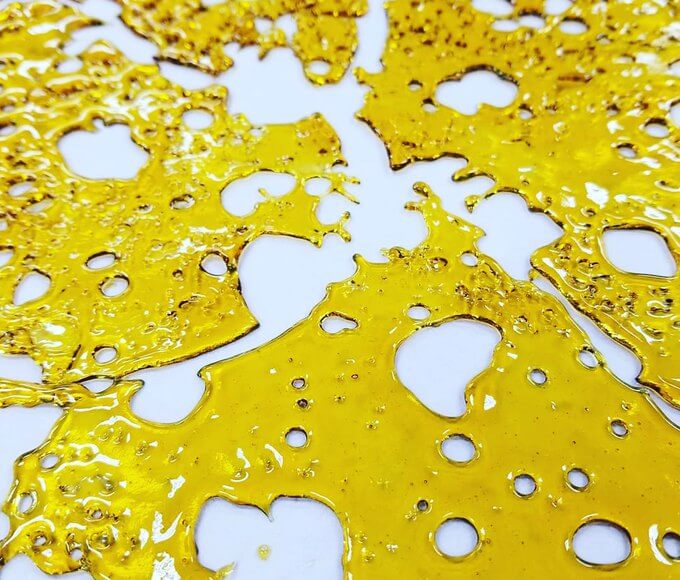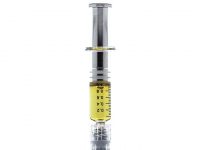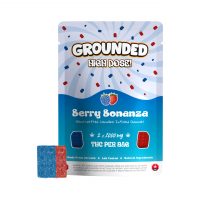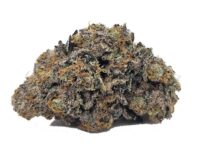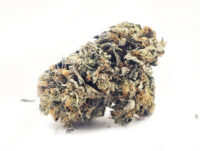How can you tell if your shatter is purged right?
How can you tell if your shatter is purged right?
In the world of cannabis concentrates, purity is king, and today we’re diving deep into the fascinating process of shatter purging. Did you know that up to 40% of concentrate users have experienced issues with improperly purged shatter products? Yikes! But don’t worry, we’ve got you covered. Let’s embark on this journey to ensure your concentrate game is clean, safe, and top-notch.
In this article, we’ll explore:
- The basics of shatter and purging: What it is and why it matters
- Spotting impurities: How to identify potentially dangerous concentrates
- Health risks: What’s at stake when consuming unpurged products
- Purging techniques: The right way to clean your concentrates
- DIY purging: Is it worth trying at home?
- Consumer guide: Choosing clean concentrates like a pro
Understanding Shatter and the Purging Process
Let’s start with the basics. Shatter is a type of cannabis concentrate known for its glass-like appearance and high potency. It’s typically made by extracting cannabinoids and terpenes from the cannabis plant using solvents like butane or CO2. But here’s the catch: these solvents need to be removed before consumption, and that’s where purging comes in.
Purging is essentially the process of removing residual solvents from the concentrate. It’s crucial because inhaling these solvents can be harmful to your health. The most common method is vacuum purging, which uses low pressure and controlled heat to encourage the solvents to evaporate.
The science behind purging is fascinating. It’s all about manipulating boiling points and vapor pressure. By lowering the atmospheric pressure in a vacuum oven, we can make solvents boil off at lower temperatures, preserving those delicate terpenes that give your concentrate its unique flavor and effects.
Identifying Impurities in Your Shatter
Now, how can you tell if your shatter is clean? Here are some telltale signs:
- Visual cues: Properly purged shatter should be clear and transparent. Cloudiness or a hazy appearance can indicate residual solvents.
- Texture: Clean shatter should be stable at room temperature. If it’s overly sticky or sappy, it might not be fully purged.
- The spark test: Place a small amount on a hot nail. If it sparks or crackles, there might be residual solvents present.
- Aroma: A strong chemical smell is a red flag. Clean shatter should smell like cannabis, not solvents.
Health Risks of Consuming Unpurged Concentrates
Let’s get serious for a moment. Consuming unpurged concentrates isn’t just about a subpar experience; it can be downright dangerous. Short-term effects of inhaling residual solvents can include dizziness, nausea, and headaches. Long-term exposure has been linked to more severe issues like organ damage and neurological problems.
This is why lab testing is so crucial in the concentrate industry. Reputable producers submit their products for rigorous testing to ensure they’re free from harmful residuals. As consumers, we have the right to ask for these test results. Remember, your health is worth more than any high!
Proper Purging Techniques for Clean Concentrates
So, what does proper purging look like? Here’s a breakdown:
- Vacuum purging: This is the gold standard. It uses a vacuum oven to lower pressure and gently heat the concentrate, encouraging solvent evaporation.
- Temperature control: Too hot, and you’ll degrade those precious cannabinoids and terpenes. Too cool, and you won’t remove all the solvents. It’s a delicate balance!
- Time and patience: Proper purging can take anywhere from 24 to 72 hours. Rushing the process often leads to inferior products.
- Advanced techniques: Some producers use methods like winterization or fractional distillation for even purer results.
DIY Purging: Should You Try It at Home?
Now, I know what some of you are thinking: “Can I do this at home?” Well, you could, but should you? DIY purging comes with significant risks, including fire hazards and potential exposure to harmful chemicals. If you’re determined to try, you’ll need specialized equipment like a vacuum pump, chamber, and oven, not to mention a solid understanding of the science involved.
For most of us, it’s safer and more reliable to leave purging to the professionals. After all, they have the expertise and equipment to do it right.
Choosing Clean Concentrates: A Consumer’s Guide
So, how can you ensure you’re getting clean concentrates? Here are some tips:
- Read lab results: Look for reports that show residual solvent levels. In most legal markets, these should be below 500 parts per million (ppm).
- Ask questions: Don’t be shy about asking your dispensary about their sourcing and testing practices.
- Know your brands: Research and stick with reputable producers known for their clean products.
- Price considerations: While not always true, higher prices often reflect more rigorous production and testing standards.
Exploring Different Types of Clean Concentrates
While we’ve focused on shatter, it’s worth noting that there are many other types of concentrates out there. Each has its own purging requirements and characteristics:
- Wax and budder: These have a more opaque, creamy consistency and often require slightly different purging techniques than shatter.
- Live resin: This is made from fresh-frozen plant material and often uses a more complex extraction process to preserve terpenes.
- Rosin: A solventless option that’s made using heat and pressure, eliminating the need for chemical solvents altogether.
Ultimately, the best concentrate for you depends on your preferences for consistency, flavor, and potency. Whatever you choose, always prioritize purity and safety.
Looking Ahead: The Future of Clean Concentrates
As we wrap up our deep dive into the world of shatter purging, it’s clear that the quest for cleaner, purer concentrates is ongoing. The cannabis industry is constantly evolving, with new extraction methods and purging techniques being developed all the time. As consumers, we play a crucial role in driving this innovation by demanding high-quality, clean products.
Remember, when it comes to concentrates, purity isn’t just about getting the best high – it’s about protecting your health and enjoying cannabis responsibly. So next time you’re eyeing that golden slab of shatter, you’ll know exactly what to look for. Stay safe, stay informed, and most importantly, enjoy your clean concentrates!
Don’t forget to share this knowledge with your fellow cannabis enthusiasts. After all, a well-informed community is a happy and healthy one. Happy dabbing, folks!
In this article, we’ll explore:
- The basics of shatter and purging: What it is and why it matters
- Spotting impurities: How to identify potentially dangerous concentrates
- Health risks: What’s at stake when consuming unpurged products
- Purging techniques: The right way to clean your concentrates
- DIY purging: Is it worth trying at home?
- Consumer guide: Choosing clean concentrates like a pro
Understanding Shatter and the Purging Process
Let’s start with the basics. Shatter is a type of cannabis concentrate known for its glass-like appearance and high potency. It’s typically made by extracting cannabinoids and terpenes from the cannabis plant using solvents like butane or CO2. But here’s the catch: these solvents need to be removed before consumption, and that’s where purging comes in.
Purging is essentially the process of removing residual solvents from the concentrate. It’s crucial because inhaling these solvents can be harmful to your health. The most common method is vacuum purging, which uses low pressure and controlled heat to encourage the solvents to evaporate.
The science behind purging is fascinating. It’s all about manipulating boiling points and vapor pressure. By lowering the atmospheric pressure in a vacuum oven, we can make solvents boil off at lower temperatures, preserving those delicate terpenes that give your concentrate its unique flavor and effects.
Identifying Impurities in Your Shatter
Now, how can you tell if your shatter is clean? Here are some telltale signs:
- Visual cues: Properly purged shatter should be clear and transparent. Cloudiness or a hazy appearance can indicate residual solvents.
- Texture: Clean shatter should be stable at room temperature. If it’s overly sticky or sappy, it might not be fully purged.
- The spark test: Place a small amount on a hot nail. If it sparks or crackles, there might be residual solvents present.
- Aroma: A strong chemical smell is a red flag. Clean shatter should smell like cannabis, not solvents.
Health Risks of Consuming Unpurged Concentrates
Let’s get serious for a moment. Consuming unpurged concentrates isn’t just about a subpar experience; it can be downright dangerous. Short-term effects of inhaling residual solvents can include dizziness, nausea, and headaches. Long-term exposure has been linked to more severe issues like organ damage and neurological problems.
This is why lab testing is so crucial in the concentrate industry. Reputable producers submit their products for rigorous testing to ensure they’re free from harmful residuals. As consumers, we have the right to ask for these test results. Remember, your health is worth more than any high!
Proper Purging Techniques for Clean Concentrates
So, what does proper purging look like? Here’s a breakdown:
- Vacuum purging: This is the gold standard. It uses a vacuum oven to lower pressure and gently heat the concentrate, encouraging solvent evaporation.
- Temperature control: Too hot, and you’ll degrade those precious cannabinoids and terpenes. Too cool, and you won’t remove all the solvents. It’s a delicate balance!
- Time and patience: Proper purging can take anywhere from 24 to 72 hours. Rushing the process often leads to inferior products.
- Advanced techniques: Some producers use methods like winterization or fractional distillation for even purer results.
DIY Purging: Should You Try It at Home?
Now, I know what some of you are thinking: “Can I do this at home?” Well, you could, but should you? DIY purging comes with significant risks, including fire hazards and potential exposure to harmful chemicals. If you’re determined to try, you’ll need specialized equipment like a vacuum pump, chamber, and oven, not to mention a solid understanding of the science involved.
For most of us, it’s safer and more reliable to leave purging to the professionals. After all, they have the expertise and equipment to do it right.
Choosing Clean Concentrates: A Consumer’s Guide
So, how can you ensure you’re getting clean concentrates? Here are some tips:
- Read lab results: Look for reports that show residual solvent levels. In most legal markets, these should be below 500 parts per million (ppm).
- Ask questions: Don’t be shy about asking your dispensary about their sourcing and testing practices.
- Know your brands: Research and stick with reputable producers known for their clean products.
- Price considerations: While not always true, higher prices often reflect more rigorous production and testing standards.
Exploring Different Types of Clean Concentrates
While we’ve focused on shatter, it’s worth noting that there are many other types of concentrates out there. Each has its own purging requirements and characteristics:
- Wax and budder: These have a more opaque, creamy consistency and often require slightly different purging techniques than shatter.
- Live resin: This is made from fresh-frozen plant material and often uses a more complex extraction process to preserve terpenes.
- Rosin: A solventless option that’s made using heat and pressure, eliminating the need for chemical solvents altogether.
Ultimately, the best concentrate for you depends on your preferences for consistency, flavor, and potency. Whatever you choose, always prioritize purity and safety.
Looking Ahead: The Future of Clean Concentrates
As we wrap up our deep dive into the world of shatter purging, it’s clear that the quest for cleaner, purer concentrates is ongoing. The cannabis industry is constantly evolving, with new extraction methods and purging techniques being developed all the time. As consumers, we play a crucial role in driving this innovation by demanding high-quality, clean products.
Remember, when it comes to concentrates, purity isn’t just about getting the best high – it’s about protecting your health and enjoying cannabis responsibly. So next time you’re eyeing that golden slab of shatter, you’ll know exactly what to look for. Stay safe, stay informed, and most importantly, enjoy your clean concentrates!
Don’t forget to share this knowledge with your fellow cannabis enthusiasts. After all, a well-informed community is a happy and healthy one. Happy dabbing, folks!

